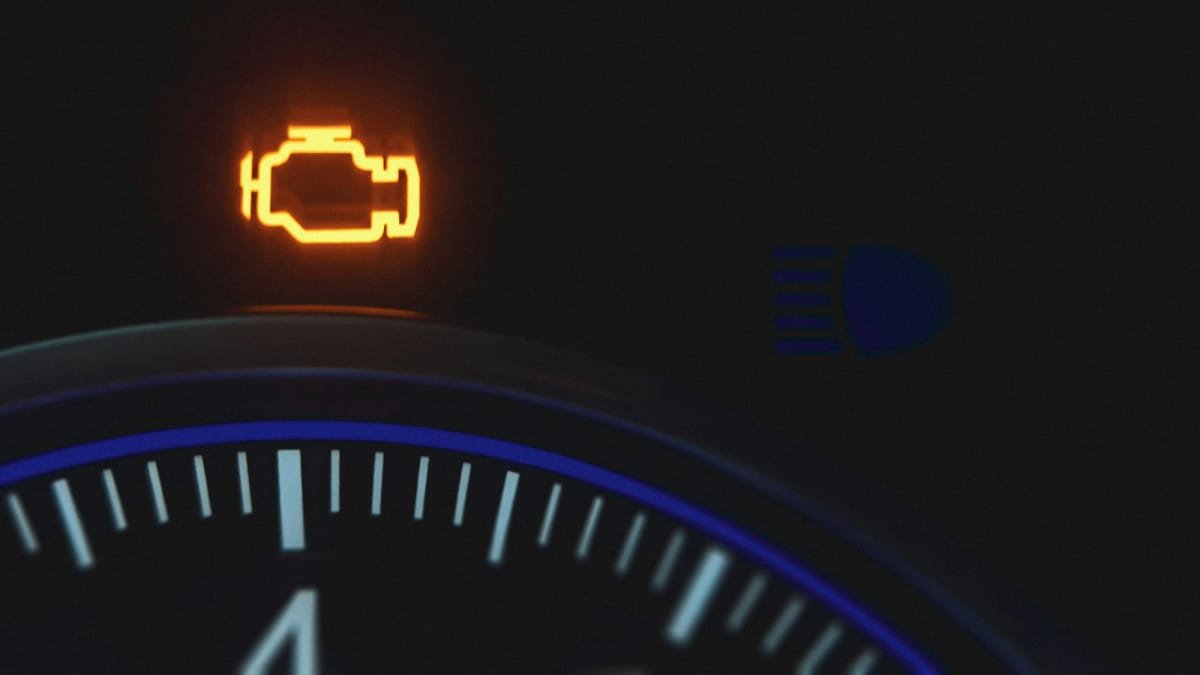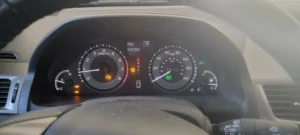That little glowing light on your dashboard—the one shaped like an engine—can be a source of anxiety for many drivers. The check engine light is your car’s way of telling you something isn’t quite right under the hood. While it might seem like a minor annoyance, ignoring it can lead to bigger problems down the road.
But what if there was a simple trick to turn off the check engine light? Before you get too excited, it’s important to understand that this light is there for a reason. It’s not just a random warning; it’s a signal that your vehicle’s onboard diagnostics system has detected an issue.
However, there are times when the light comes on due to a minor glitch or a temporary problem, and in those cases, you might be able to reset it yourself.
In this blog, we’ll explore a straightforward method to turn off the check engine light, along with a detailed guide on why it comes on, what it means, and when you should seek professional help.
Whether you’re a seasoned car enthusiast or a casual driver, this information will help you better understand your vehicle and keep it running smoothly.
Understanding the Check Engine Light
The check engine light is part of your car’s onboard diagnostics system (OBD). When the system detects a problem, it triggers the light to alert you. The issue could range from something as simple as a loose gas cap to more serious problems like a malfunctioning sensor or engine trouble.
Modern vehicles are equipped with advanced sensors that monitor everything from engine performance to emissions.
When something falls outside the normal range, the system logs a trouble code and illuminates the check engine light. These codes can be read using an OBD scanner, which helps mechanics diagnose the problem.
While the light itself doesn’t tell you exactly what’s wrong, it’s a clear indication that your car needs attention. Ignoring it can lead to reduced performance, lower fuel efficiency, or even costly repairs.
Why Does the Check Engine Light Come On?
There are countless reasons why the check engine light might illuminate. Here are some of the most common causes:
- Loose or Faulty Gas Cap: A loose gas cap can cause fuel vapors to escape, triggering the light.
- Oxygen Sensor Failure: The oxygen sensor monitors the amount of unburned oxygen in the exhaust system. A faulty sensor can affect fuel efficiency.
- Catalytic Converter Issues: The catalytic converter reduces harmful emissions. Problems here can lead to poor performance and increased emissions.
- Spark Plug or Ignition Coil Problems: Worn-out spark plugs or faulty ignition coils can cause misfires, reducing engine performance.
- Mass Airflow Sensor Malfunction: This sensor measures the amount of air entering the engine. A malfunction can lead to poor fuel economy and performance.
- Exhaust Gas Recirculation (EGR) Valve Issues: The EGR valve helps reduce emissions by recirculating exhaust gases. Problems here can trigger the light.
The Simple Trick to Turn Off the Check Engine Light
If you’re certain the light is on due to a minor issue—like a loose gas cap—you can try resetting it yourself. Here’s a step-by-step guide to turning off the check engine light:
Step 1: Check the Gas Cap
Start by inspecting the gas cap. If it’s loose, tighten it until you hear a clicking sound. If the cap is damaged or missing, replace it with a new one. After tightening or replacing the cap, drive the car for a few miles to see if the light turns off.
Step 2: Use an OBD Scanner
If the light remains on, you’ll need an OBD scanner to reset it. These devices are affordable and easy to use. Here’s how:
- Locate the OBD port, usually found under the dashboard near the steering wheel.
- Plug the scanner into the port and turn on the ignition (without starting the engine).
- Follow the scanner’s instructions to read the trouble codes.
- If the code indicates a minor issue, you can clear it using the scanner.
Step 3: Disconnect the Battery
If you don’t have an OBD scanner, you can try disconnecting the car battery. Here’s how:
- Turn off the engine and remove the key from the ignition.
- Locate the battery and use a wrench to disconnect the negative terminal.
- Wait for about 15 minutes to allow the system to reset.
- Reconnect the terminal and start the car.
Note: Disconnecting the battery will also reset other systems, such as the radio and clock, so you may need to reconfigure them.
Preventing the Check Engine Light from Coming On
The best way to avoid the check engine light is through regular maintenance and care. Here are some tips to keep your car in top shape:
- Follow the Maintenance Schedule: Stick to the manufacturer’s recommended service intervals for oil changes, filter replacements, and tune-ups.
- Use Quality Fuel: Poor-quality fuel can cause engine problems and trigger the light.
- Inspect the Gas Cap: Make sure the gas cap is tight and in good condition.
- Address Issues Promptly: If you notice any unusual symptoms, have them checked out right away.
- Keep an Eye on the Dashboard: Pay attention to other warning lights and indicators.
The check engine light is a valuable tool that helps you stay informed about your car’s health. While it can be tempting to ignore it, addressing the issue promptly can save you time, money, and stress. With the simple trick outlined in this blog, you can reset the light and get back on the road—but remember, this is only a temporary solution for minor issues.
For persistent or serious problems, always consult a professional. By taking good care of your vehicle and staying proactive about maintenance, you can keep the check engine light off and enjoy a smoother, more reliable ride.
This blog provides a detailed guide to understanding and addressing the check engine light, helping you take control of your car’s health. If you found this information helpful, feel free to share it with fellow drivers!





